My DIL Broke My House Rules—I Made Her Face the Consequences

Ahh, what a nice cosmic family. Meet Mars — I bet you’ve met him before. These two little guys are Phobos and Deimos, Mars’ small moons. But it seems like Mars isn’t treating the little ones the right way. Phobos and Deimos are believed to be captured asteroids.
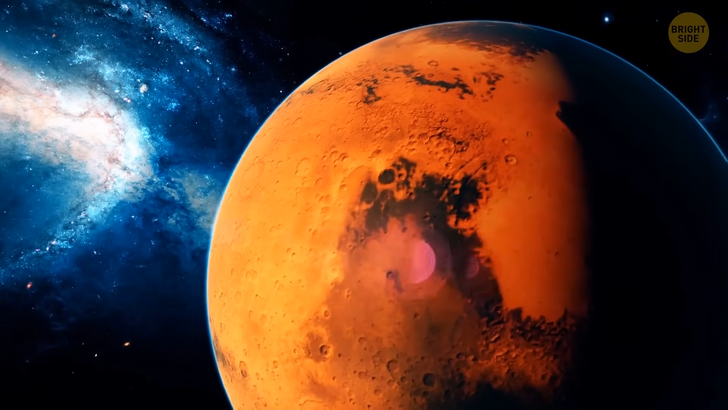
However, Phobos is gradually moving closer to Mars due to gravity, and it is predicted that it will eventually be destroyed by the planet’s gravity within the next thirty-fifty million years. I won’t be around then. So I imagine this will result in a ring of debris around Mars, similar to Saturn’s rings. However, this process is a natural phenomenon and not an act of destruction by Mars.
Apparently, Phobos is getting ripped apart by the crazy gravitational forces of the Red Planet! But wait, there’s more! Phobos has these crazy parallel grooves all over its surface. We used to think they were from an asteroid crash, but now scientists think they’re actually from Mars’ intense gravity pulling the moon apart. Talk about a rough ride!
Scientists have this wild idea that when a little guy, like Phobos, gets too close to a big guy, like Mars, it starts to stretch out towards it. They call it the tidal force. Phobos is predicted to get stretched out so much that it’ll actually break apart! Crazy, right? And the debris from the moon will form a tiny ring around Mars, just like Saturn’s rings.
Now, some people thought that Phobos’ tiger stripes were caused by tidal forces before, but that theory got shut down because the moon is just too darn fluffy. But now, these genius researchers ran some computer simulations and found out that maybe there’s a hard-shell underneath all that fluff that could create grooves on the surface. But don’t worry at the rate Phobos is going, it’s going to crash into Mars in about forty million years. But if tidal forces are already tearing it apart, it might not even last that long!
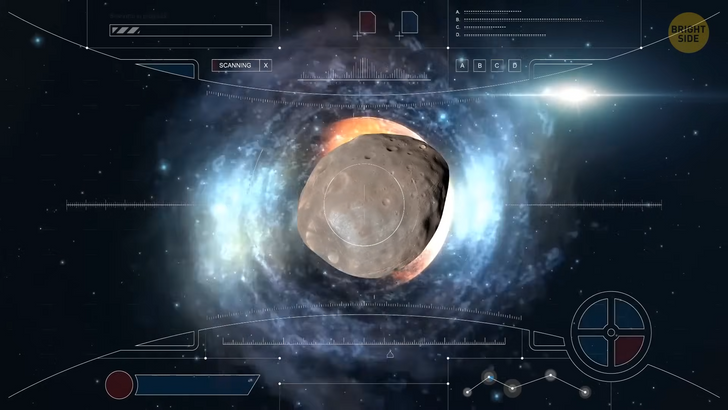
However, we will still have the chance to learn more about Phobos. NASA just picked ten rockstar researchers from all over the U.S. to join the Science Working Team for JAXA’s Martian Moons eXploration or just MMX mission! As NASA-supported participating scientists, they’ll be helping JAXA explore the two Martian moons, Phobos and Deimos.
And get this — they’re even planning to land on Phobos and grab a surface sample! The mission is set to launch in twenty twenty-four, and we’ll get our hands on that sample in twenty twenty-nine. Seven of the lucky researchers will be using the MMX flight instruments to conduct their research.
Phobos is a real oddball — it’s only seventeen miles wide and orbits Mars at a distance of three thousand seven hundred twenty-eight miles. To be precise. That’s way closer than Earth’s moon, which takes a whole twenty-seven days to orbit us. But Phobos is in a death-spiral towards Mars and is slowly falling towards the planet’s surface at a rate of six feet every one hundred years!
But there must be a reason why Mars is acting that nastily, right? What if it’s all just because of plain vengeance? Okay, so picture this: Mars is minding its own business, being all hot and watery like a young Earth. It’s got a sweet magnetic field that’s protecting it from cosmic radiation and keeping its atmosphere nice and thick. Life is good.
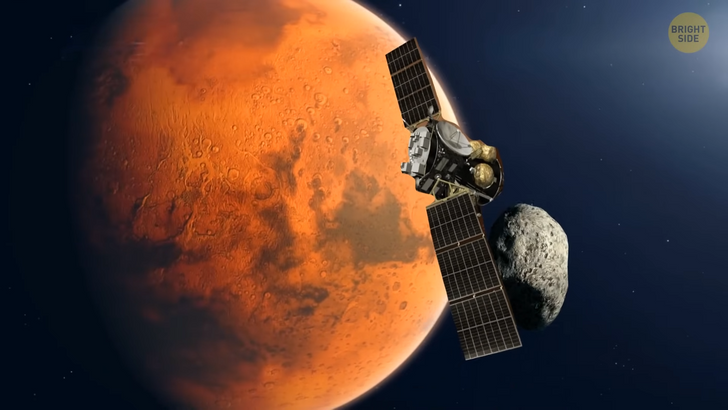
But then, at least twenty asteroids, each the size of a small country, come crashing down on Mars like a giant game of cosmic whack-a-mole. One of them even leaves a crater that’s almost two thousand miles wide.
Now imagine how Mars must feel with two asteroids being its moons after what other asteroids did to the Red Planet. All these impacts are like a massive punch to Mars’ gut, and its already weak magnetic field is knocked out cold. The core gets all overheated and can’t circulate properly, which means no more magnetic field to protect the planet.
It’s like if you were wearing nothing at a depth of the Mariana Trench. If it was possible, you’d be defenseless! And chilly. That’s basically what happened to Mars. So now, poor Mars is out there in the cold, unprotected from all those nasty cosmic rays. It’s like going outside without sunscreen — not a good idea! But at least we can learn from Mars’ mistakes and make sure Earth doesn’t have the same fate. Maybe we should start investing in some asteroid insurance...
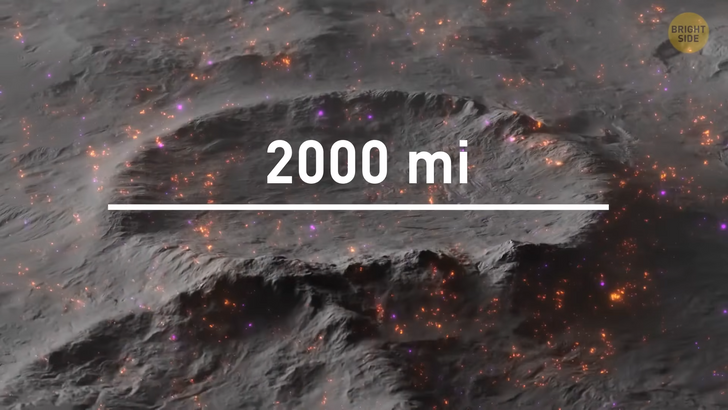
But trust me, the Red Planet isn’t mean at all. It’s actually pretty friendly. While Mars seems to be pretty tough for Phobos, there’s something that might be thriving with Mars’ help. So, get this — a team of scientists found a way to grow rice on Mars! Yeah, you heard me right. They used MMS — not the outdated way to send pictures, but a special soil called Mojave Mars Simulant. It’s supposed to mimic Martian soil.
But here’s the catch — Martian soil has these nasty perchlorate salts that can be toxic for plants. So, the team grew three types of rice — one normal and two gene-edited with mutations that make them better at handling stress like drought or salinity. And guess what? The mutant strains were able to root in soil with one gram of perchlorate per kilogram! Take that, Martian soil!
But hold up. The rice grown in the MMS didn’t turn out as great as the ones grown in regular potting soil. So, the team decided to mix a quarter of potting soil with the Martian simulant, and look there! The plants started developing better. Now, these scientists aren’t just thinking about feeding Martians. They also want to see if their findings can help grow crops in places on Earth with high salinity.
And get this — the whole project started when two researchers met for coffee and decided to try growing plants together. Well isn’t that nice? I suspect you’re about to say: “Hey, but if you want to grow rice on Mars, you have to ship insane amounts of water from Earth, as it’s not easy to quench this plant’s thirst!” You’re right, you need about four hundred forty-nine gallons of water to only grow a pound of rice.
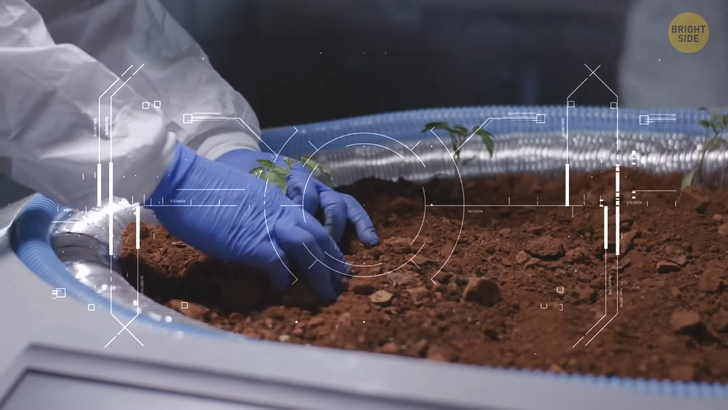
But guess what? Scientists just made a groundbreaking announcement at the Lunar and Planetary Science Conference in Texas — they found a relict glacier near Mars’ equator! That’s right, water ice on Mars, even near the equator! This is huge news and could mean that there’s even more ice just below the surface. It’s not just any glacier, it’s a relict glacier that’s estimated to be three point five miles long and up to two point five miles wide. That’s like the size of a small town!
It’s got all the features of a glacier, including crevasse fields and moraine bands. But get this — it’s not actually ice, it’s a salt deposit that formed on top of the glacier while preserving its shape. So how did this salt deposit form?
Well, it turns out that volcanic materials blanketing the region might have something to do with it. When these materials come in contact with water ice, sulfate salts may form and build up into a hardened, crusty layer. Over time, erosion removed the volcanic materials, exposing the sulfates and revealing the glacier’s unique features.
This glacier is young, likely from the Amazonian geologic period. That means that Mars has had surface ice in recent times. Who knows what other icy secrets Mars is hiding? But hold your horses, there’s still more research to be done. Scientists need to figure out if there’s still water ice preserved underneath the salt deposit or if it has disappeared entirely.
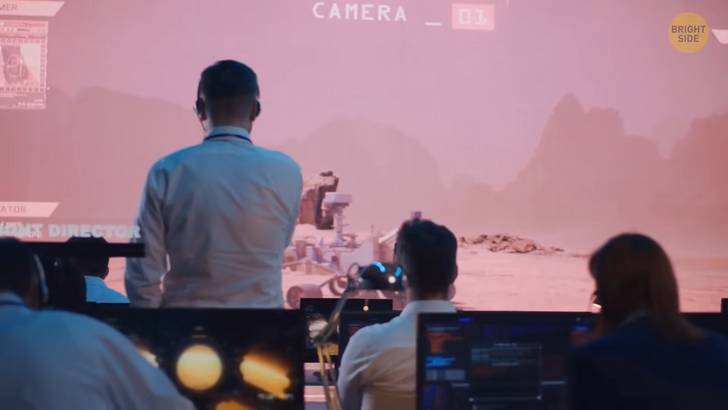
And if there is still water ice at shallow depths near the equator, that could have major implications for human exploration. Imagine being able to extract water from the ground at a warmer location — that would be a game-changer!
So let’s see what else these scientists uncover about our favorite red neighbor. Maybe one day we’ll even get to visit that salt-glacier statue in person! See you next time!











